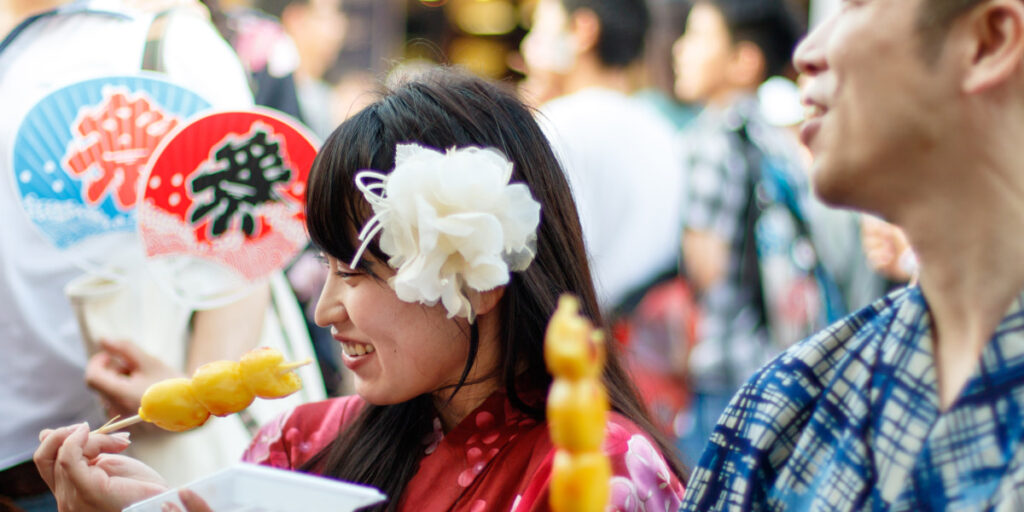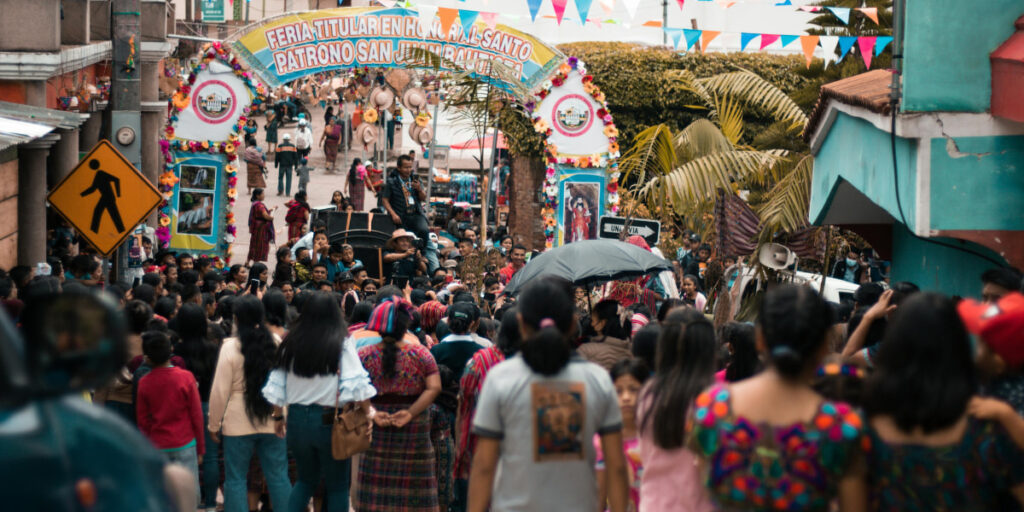
Strolling through a lively cultural festival, you can immediately sense the excitement and variety of tradition in the air. Embracing different customs feels like unlocking new worlds, each with its own set of rules. Approaching these wonders with cultural festival etiquette enriches the experience and ensures mutual respect.
Engaging with traditions outside your own matters because it shapes how hosts and fellow visitors perceive you. This mutual respect creates positive exchange and strengthens community ties. It’s about curiosity, sensitivity, and truly honoring each moment you share.
This guide explores practical steps to help you blend in, connect meaningfully, and avoid unintentional missteps. You’ll discover actionable strategies and examples designed for real-life situations, making each interaction rewarding for everyone.
Observing Customs Creates a Welcoming Atmosphere from Your First Step
When you arrive at any cultural celebration, your attention to local customs quietly signals respect. Even simple gestures, like waiting your turn, reflect thoughtful participation and set a positive tone.
Knowing a little about cultural festival etiquette in advance helps you read the room. Locals notice when you tiptoe through rituals or ask about meaning before joining in. Every small action builds rapport and trust.
Greeting Rituals Shape First Impressions in Every Setting
Bowing, shaking hands, or meeting eyes—each culture encourages a unique greeting style. In many Asian festivals, bowing gently is a sign of humility, while hearty handshakes may dominate Western celebrations.
If you’re unsure how to greet someone, watch for a moment before acting. Copying the host’s gestures ensures you won’t come across as unaware. If invited to participate, mirror the greeting you see.
Using a soft, sincere tone when introducing yourself lets authenticity shine through. In Japan, many visitors say, “Nice to meet you,” while bowing to show deference. Try matching this respectful approach.
Clothing Choices Send Powerful Signals About Your Respect
Before leaving home, check if the festival requests specific clothing. Modest attire, covered shoulders, or closed shoes are frequent expectations at religious events.
For example, at Indian Holi celebrations, guests often wear old, light clothing due to the vibrant colors used in rituals. Choosing attire that blends practicality and sensitivity instantly shows you did your homework.
Avoid flashy accessories that may distract from the event. Understated outfits allow cultural symbols to stand out and demonstrate your respect for the tradition’s style. Always lean toward subtlety when in doubt.
| Festival Type | Preferred Greeting | Dress Expectation | Action Step |
|---|---|---|---|
| Buddhist Ceremony | Hands in prayer, bow | Modest, arms covered | Remove shoes, bow gently |
| Japanese Matsuri | Soft bow | Yukata or neat attire | Stand in line quietly |
| Mexican Fiesta | Handshake, smile | Casual, colorful | Dance if invited |
| Muslim Eid | Handshake, sometimes hug | Long sleeves, modest | Say Eid Mubarak |
| Diwali Gathering | Namaste or handshake | Bright, modest | Bring sweets or gifts |
Following Event Cues Wins You Local Trust and Comfort
Reading the flow of a cultural festival boosts your ability to fit in. Observing timing, body language, or signals, you’ll quickly see when to join group activities, listen, or step aside.
Engaging at just the right moment is an art. This adaptability ensures that you never interrupt an important ritual or miss out on a key moment of participation.
Understanding Unspoken Social Signals
Scan the crowd for pauses, head turns, or subtle nods that indicate when something begins. These cues help guide your timing without anyone “correcting” you out loud.
- Pause and watch before joining a dance: Waiting to see how locals enter the group allows seamless participation and shows humility about your place in the ritual.
- Mirror the body language of hosts: Stand or sit as others do, which avoids drawing attention and signals comfort with the protocol.
- Keep hands visible but calm at the table: In Turkish festivals, this displays honesty and friendship, reinforcing your intent to join in good faith.
- Wait for a food invitation: Instead of serving yourself right away, stay alert for an elder’s gesture. This honors hierarchy and order of service.
- Step back during sacred moments: If worship or ritual unfolds, standing quietly at a respectful distance prioritizes reverence and prevents accidental interference.
Every gesture says, “I’m here to learn.” Don’t rush—let your actions reflect patience and genuine interest.
Prioritizing Active Listening in Loud, Festive Spaces
Even amid music and chatter, ears tuned to cues capture opportunities to connect. In noisy environments, lean in slightly or nod to show you’re engaged and understanding.
- Make eye contact: You’ll be perceived as interested and courteous, paving the way for deeper exchange when the moment quiets down.
- Repeat names softly: Memorizing names can be tough in a new language, but repeating them back demonstrates care and helps build relationships.
- Gestures matter: Gentle, open-handed waves or a light touch on the heart are universal ways to convey gratitude, regardless of language skills.
- Affirm understanding nonverbally: Small smiles and affirming gestures acknowledge you’re tuned in, even if you miss a word or two amid the bustle.
- Thank hosts at parting: Saying goodbye directly, with warmth and a smile, shows lasting appreciation for being welcomed into the celebration.
Small efforts to listen and respond immediately strengthen the connections that make these festivals memorable. Try echoing back a phrase like “Beautiful performance!” to honor the moment and the people behind it.
Navigating Shared Rituals Lets You Build Genuine Connections
Engaging in rituals goes beyond just watching—it means participating respectfully and fully. This creates shared memories and fosters mutual understanding between visitors and hosts.
Observed actions, like walking clockwise around a shrine or placing an offering with both hands, make a strong impression on others.
Eating and Drinking with Awareness of Tradition Boosts Acceptance
In some cultures, eating with your right hand is expected, while in others utensils may be optional or even unwelcome. Try researching customary table manners in advance to avoid embarrassment.
Saying “thank you” after a shared meal can be as impactful as any gift. Hosts light up when a guest learns to say a traditional phrase, such as “Terima kasih” in Malaysia.
If you make a mistake, a quick nod or apology paired with a self-deprecating smile demonstrates humility, which resets any tension and keeps the mood positive for future interactions.
Joining Traditional Games and Dances Respectfully
Festival games sometimes serve as metaphors for community spirit. Jumping into a circle dance at a Greek festival, for example, builds trust through teamwork and rhythm.
Don’t try to lead unless you’re invited. Instead, follow a peer’s subtle cues—step left when they do, or clap if shown. Mimicking, not improvising, honors the centuries-old choreography.
Thanking your guide or partner, either verbally or with a gesture, like a thumbs-up or a quick bow, cements your appreciation for their patience.
Photography and Social Sharing Require Thoughtful Boundaries
Capturing memories is tempting, but honoring cultural sensitivities around images is crucial. Consent matters everywhere, since every culture has its limits for public and private moments.
Body language, signage, or verbal instructions signal if photos are welcome. Reading these clues and asking when unsure keeps trust intact.
Identifying the Right Moments for Pictures
If you spot posted signs prohibiting photos, respect those boundaries unconditionally. Hosts appreciate it and you’ll avoid negative attention.
When eager to photograph a group, first observe if others are doing so. If not, quietly ask, “Would it be okay to take a picture? I want to remember this moment.” Wait for a warm smile or nod before snapping your shot.
Even after getting consent, share the intent—”Only for my memories, not social media.” This transparency reassures everyone you’re not exploiting intimate traditions for outside gain.
Sharing Festival Content Thoughtfully Online
If a ritual carries sacred meaning, consider posting a summary or a respectful landscape photo instead of people. Explain what the moment meant to you, not just what you saw.
Tagging or mentioning the festival can demonstrate your admiration, but never post others’ faces without clear approval. In some regions, blending into a group shot with a backdrop is safest.
Showing restraint serves as a subtle extension of cultural festival etiquette. Always prefer quality over quantity—selecting one powerful image is more meaningful than oversharing.
Troubleshooting Cultural Missteps with Grace and Openness
Even seasoned travelers encounter moments where they miss a cue or break a rule. Owning the error prevents embarrassment from spiraling and allows for smooth recovery.
Locals usually sense honest mistakes, especially with rapid apologies and self-correction. Being genuine shields you from lasting negative impressions.
Recovering Poise After an Accidental Blunder
If you step into a restricted area or misuse sacred items, immediately pause, bow your head slightly, and say, “Sorry—I’m learning and want to get this right.” This resets expectations.
Avoid lengthy explanations. Simplicity and humility—”I was eager but missed the sign”—invite forgiveness, especially when coupled with visible effort to amend or clean up.
Later, ask a festival host or peer for advice. This not only prevents repeated mistakes but opens doors for cultural exchange and deeper friendship: “Is there a good way to participate next time?”
Building Deeper Trust Through Honest Dialogue
If someone approaches you about an error, listen intently and avoid defensive language. Say, “Thank you for letting me know—I appreciate learning more about your traditions.” This builds credibility for future visits.
Afterward, engage in friendly conversation about what makes the rule significant. You’ll gain insight and spark new relationships through your curiosity and transparency.
A simple gesture, like bringing small snacks or asking, “Would you show me the right way?” demonstrates openness. Over time, these habits help establish you as a welcome guest wherever you travel.
Conclusion: Leaving Every Festival with New Wisdom and Lasting Respect
Returning home from a festival, you’ll carry more than photos—you’ll have stories, new friendships, and insight gained from practicing thoughtful cultural festival etiquette. Simple actions transform casual attendance into heartfelt participation.
The confidence to enter a room, greet with care, or wait for cues grows with every event. Guests who honor local customs and recover kindly from mistakes create goodwill that ripples across communities.
Whether it’s pausing before a ritual, echoing local phrases, or gracefully accepting correction, your commitment to learning and respecting unique customs ensures each festival visit matters—for you and for everyone involved.
Frequently Asked Questions
What’s the best way to learn etiquette before attending a festival?
Check festival websites, read visitor guidelines, or ask hosts directly. Reliable travel guides and embassy sites provide clear protocol. Watching YouTube clips of past events can reveal greeting styles, dress codes, and food etiquette.
When is it okay to take photos at a cultural festival?
It’s appropriate only if hosts or signage allow pictures, or when locals also take photos. Always seek permission before photographing people, especially during sensitive rituals. When uncertain, politely ask and respect boundaries for privacy or sacred spaces.
How can I recover if I accidentally break a cultural rule?
Pause immediately, acknowledge your mistake, and offer a sincere, concise apology. Smile gently, then listen to any guidance given. Avoid lengthy explanations. Openness to correction reassures hosts of your respect and eagerness to participate properly.
Should I bring gifts when attending a festival?
Research the specific culture’s expectations. In some places, small gifts or home-cooked food are welcomed; in others, bringing nothing is standard. When in doubt, ask a local for advice, and always present gifts with both hands if that’s customary.
What should I do if someone corrects my behavior at an event?
Listen with attention, thank them sincerely, and use their feedback right away. This response demonstrates adaptability and helps build new relationships. Later, use the experience to refine your approach in future celebrations.

Essential Invitation Etiquette
Learn invitation etiquette to send invites politely, set the right tone, and make every guest feel valued before the event even begins.

